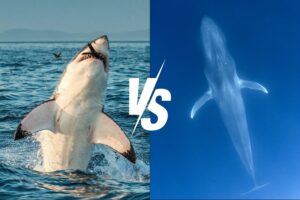
When to fertilize your lawn is not just a matter of convenience but a critical determinant of its overall health and appearance. Fertilization stands as a cornerstone in the realm of lawn care, providing essential nutrients that nourish the grass and fortify its resilience against environmental stressors. However, the timing of this application plays a pivotal role in optimizing its effectiveness and ensuring the sustained vitality of your yard. In this article, we delve into the nuances of lawn fertilization timing, exploring the factors that influence it and identifying the best months to fertilize your yard to get when to fertilize your lawn.
Understanding Lawn Fertilization
Before delving into the optimal timing for fertilizing your yard, it’s crucial to grasp the fundamentals of lawn fertilization. Nutrients such as nitrogen, phosphorus, and potassium are indispensable for healthy grass growth, bolstering its color, density, and resistance to pests and diseases. Different types of fertilizers, whether synthetic or organic, offer varying compositions and release mechanisms, each catering to specific lawn requirements. Moreover, factors such as climate, grass type, and soil condition exert a profound influence on the timing of fertilization, dictating when your yard will benefit most from nutrient supplementation.
Role of Nutrients in Lawn Health
Nitrogen, phosphorus, and potassium constitute the primary macronutrients essential for the well-being of your lawn. Nitrogen is critical for promoting vigorous vegetative growth, enhancing leaf and stem development, and imparting a lush green color to the grass. Phosphorus plays a pivotal role in root establishment and overall plant vitality, facilitating efficient energy transfer and metabolic processes within the grass. Potassium, meanwhile, fortifies the grass against stressors such as drought, disease, and temperature extremes, fostering resilience and longevity.
Types of Fertilizers
The market offers a diverse array of fertilizers, each tailored to address specific lawn care needs and preferences. Synthetic fertilizers, formulated from chemical compounds, provide a rapid infusion of nutrients to the grass, facilitating swift uptake and assimilation. Organic fertilizers, derived from natural sources such as compost, bone meal, or seaweed, offer a more gradual release of nutrients, fostering sustained growth and soil enrichment over time. Slow-release formulations, whether synthetic or organic, provide a steady supply of nutrients to the grass, minimizing the risk of nutrient leaching and environmental pollution.
Factors Influencing Fertilization Timing
Determining the optimal timing for fertilizing your yard hinges on a multitude of factors, each exerting a distinct impact on nutrient availability and grass growth dynamics. Climate and weather patterns play a pivotal role in dictating when your lawn will benefit most from fertilizer application, with temperature extremes and precipitation levels influencing nutrient uptake and utilization. Grass type and growth cycle also warrant consideration, as cool-season and warm-season grasses exhibit disparate growth patterns and nutrient requirements throughout the year. Moreover, soil condition and nutrient levels must be assessed to ascertain whether additional supplementation is necessary to address deficiencies and optimize grass health.
Ideal Timing for Fertilizing Your Yard
Armed with a comprehensive understanding of lawn fertilization principles and influencing factors, we can now explore the optimal timing for fertilizing your yard across different seasons. Early spring heralds the awakening of dormant grass from its winter slumber, presenting a prime opportunity to kickstart growth and replenish nutrient reserves depleted during the cold months. As temperatures rise and grass enters its peak growing season, late spring offers another window for fertilization, sustaining momentum and addressing any specific nutrient deficiencies that may have arisen. Transitioning into early fall, a final round of fertilization prepares the lawn for winter dormancy, promoting root growth and strengthening grass resilience in anticipation of colder weather.
Considerations for Specific Regions
The optimal timing for fertilizing your yard can vary significantly depending on your geographical location and the prevailing climatic conditions. In northern climates, where harsh winters pose a threat to grass health, early spring fertilization is crucial for jumpstarting growth and mitigating winter damage. Conversely, southern climates characterized by scorching summer temperatures necessitate a different approach, with late spring and early fall emerging as the preferred fertilization windows to combat heat stress and maintain grass vigor. Transitional climates, experiencing fluctuating temperature extremes, require careful calibration of fertilization timing to capitalize on favorable conditions and navigate seasonal transitions seamlessly.
Additional Tips for Successful Fertilization
Beyond timing, several additional considerations can enhance the efficacy of your fertilization efforts and maximize the benefits for your yard. Conducting a soil test enables you to pinpoint specific nutrient deficiencies and tailor your fertilizer application accordingly, ensuring optimal nutrient uptake and utilization by the grass. When applying fertilizer, employ proper techniques to achieve even distribution across the lawn while avoiding over-fertilization, which can lead to nutrient runoff and environmental harm. Following fertilization, diligent post-care practices such as adequate watering and monitoring grass response allow you to assess the effectiveness of your treatment and make any necessary adjustments to your maintenance routine.





